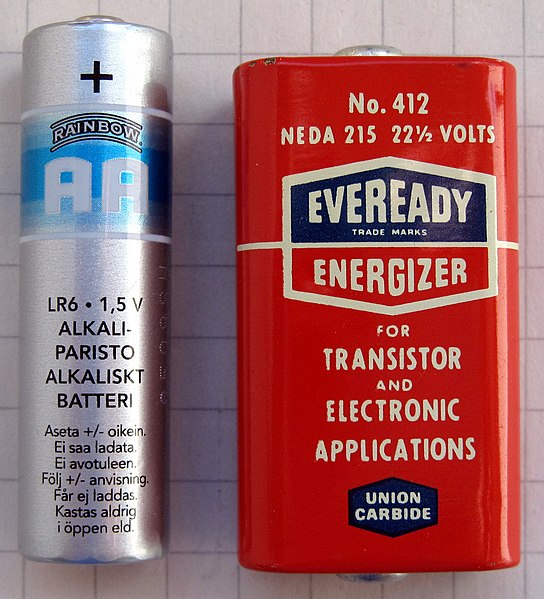The Regency TR-1 was the first commercially manufactured transistor radio, introduced in 1954. Despite mediocre performance, about 150,000 units were sold, due to the novelty of its small size and portability. Previously, transistors had only been used in military or industrial applications, and the TR-1 demonstrated their utility for consumer electronics, offering a prescient glimpse of a future full of small, convenient hand-held devices that would develop into calculators, mobile phones, tablets and the like. Surviving specimens are sought out by collectors.
Regency TR-1 transistor radio
TR-1, circuit board and casing. Exhibit of Deutsches Museum, Munich
22.5 Volt battery used in the Regency TR-1 (AA battery for comparison shown on left)
A transistor radio is a small portable radio receiver that uses transistor-based circuitry. Following the invention of the transistor in 1947—which revolutionized the field of consumer electronics by introducing small but powerful, convenient hand-held devices—the Regency TR-1 was released in 1954 becoming the first commercial transistor radio. The mass-market success of the smaller and cheaper Sony TR-63, released in 1957, led to the transistor radio becoming the most popular electronic communication device of the 1960s and 1970s. Transistor radios are still commonly used as car radios. Billions of transistor radios are estimated to have been sold worldwide between the 1950s and 2012.
A classic Emerson transistor radio, circa 1958
A seven-transistor Soviet Orljonok radio with the back open, showing parts.
Sanyo 8S-P3 transistor radio, which received AM and shortwave bands.
Regency TR-1.







